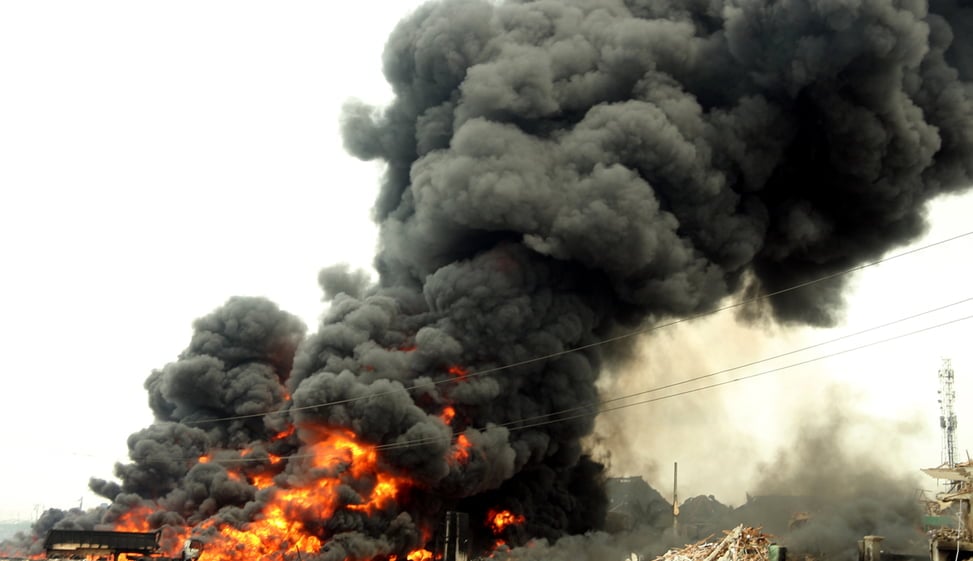Trending
China: World’s largest indoor ski resort opens in Shanghai
Published
7 months agoon
By
Ekwutos BlogThe massive facility using artificial snow and cooling machines is modeled like a glacier and opened fully to customers, after lengthy delays, on Friday. China’s northern natural pistes are shrinking amid climate change.

The facility has four separate slopes and an array of other rides, with a cable car, chairlifts and trains ferrying people to the summits
© Hector Retamal/AFP
Shanghai opened the world’s largest indoor ski resort on Friday amid searing temperatures outside as China reported its hottest August in 60 years.
Temperatures were already at 30 degrees Celsius (roughly 86 Fahrenheit) by 9 a.m. during Friday’s outdoor opening ceremony in a mock Alpine square, but were closer to freezing point inside the building.
The building has a skiing area of 90,000 square meters or 9 hectares. Incorporating other facilities likes shops, hotels, and a still-unopened water park the construction area extends to 350,000 square meters.

The vast resort is one of many large expensive projects developed in recent decades in Shanghai’s once sparsely-populated Pudong district
© CFOTO/picture alliance
The festivities marked the end of a difficult teething and test period for the facility. Chinese state media reported that safety procedures were being reviewed after an incident on Wednesday, when limited numbers of people were already allowed in, in which a patron’s finger was severed by another skier.
Industry expansion amid Winter Olympics
Years in the making, once scheduled to open in 2019 according to Chinese media, the vast resort is part of a state-supported winter sports investment drive rooted partly in the country hosting the last Winter Olympics in 2022 and also in a more general bid to cater to the recreational wishes of an expanding middle class.

The Guinness Book of Records certified the facility as the largest of its kind in the world on opening day, surpassing another giant Chinese facility in Harbin
© Hector Retamal/AFP
Located in Shanghai’s Pudong district, the L*SNOW Indoor Skiing Theme Resort was certified by Guinness World Records as the world’s largest on its opening day on Friday. It overtakes another Chinese facility in northern Harbin.
China has developed several such indoor resorts in recent years and boasts five of the 10 largest by skiing area in the world, according to Daxue Consulting. China’s CCTV reported that some 360 million people in the country do winter sports.
The construction coincides with retreating and less reliable snow slopes in the traditional skiing resorts in the north of the country amid climate change, a tale familiar to European skiiers visiting mountain ranges like the Alps.
“In China, it might have more of an effect in the north because of climate change, there are fewer people doing winter sports there,” 48-year-old skier Zhang Jin told the AFP news agency. “So some of the snow parks just aren’t operating well, they’re shrinking. Instead, it’s this kind of thing opening up right now, larger indoor ones, which I think is still pretty good.”
Solar panels on roof to offset ‘inevitably’ consuming ‘a lot’ of energy
The center uses artifical snow, rather than the oft-maligned dry ski slopes that may not provide as authentic an experience for enthusiasts but that can operate in any weather all year round.
Officials said that it uses 72 cooling machines to maitain an indoor temperature around freezing point, and 33 snow-making machines to feed the pistes.
A Shanghai government report in August acknowledged that such projects “will inevitably consume a lot of energy.” But it also said the resort was built to maximize energy reuse where possible, for instance via ice storage and waste-heat recovery systems.
Three-quarters of the building’s roof is covered with solar photovoltaic panels to help power it.
“We have taken a lot of energy-saving measures,” resort executive Yin Kang told AFP.

Chinese state media reported that the steepest slope had a 26 degree gradient, and the longest s-bend course extended for 460 meters (around 500 yards)
© Hector Retamal/AFP
You may like


Wike hosts suspended Rivers lawmakers in UK


Pascal Dozie, Founder Of Diamond Bank Passes Away At 85


Tuface’s lover Natasha Osawaru replaced as Deputy Leader after shake-up in Edo Assembly


Nigeria seeks to host 2030 Commonwealth Games


Garnacho has to leave Old Trafford, make way for Osimhen – Rio Ferdinand


NEC Meeting: No vacancy in LP leadership – Abure warns Peter Obi, Otti
Trending
Pascal Dozie, Founder Of Diamond Bank Passes Away At 85
Published
5 hours agoon
April 8, 2025By
Ekwutos Blog
The founder of the defunct Diamond Bank Plc, Pascal Gabriel Dozie, has died at the age of 85.
According to Business Day, Dozie passed away in the early hours of Tuesday, April 8, 2025.
His death came just a day before his 86th birthday, following a battle with an age-related illness.
Dozie was best known as the founder of Diamond Bank, one of Nigeria’s most innovative financial institutions before its merger with Access Bank.
He served as the bank’s chairman before handing over leadership to his son, Uzoma Dozie.
Dozie is survived by his wife Chinyere Dozie, and five children among other relatives.
Trending
Security forces foil kidnapping in Katsina, one civilian killed
Published
19 hours agoon
April 7, 2025By
Ekwutos Blog
A kidnapping attempt was foiled in the early hours of April 5, 2025, in Gidan Yan Ali, Kurba Village, Kankara Local Government Area of Katsina State, after security forces engaged armed bandits in a fierce gun battle.
Intelligence sources told Zagazola Makama that the assailants believed to be part of a larger criminal network stormed the village around 11:45 p.m., setting corn stalks ablaze and attempting to abduct women and livestock.
Prompt deployment of security personnel led to a swift response, forcing the bandits to flee into the nearby bush.
During the confrontation, a villager identified as 40-year-old Murtala Dayyabu Sidi was shot and killed by the attackers.
The intervention of security forces ensured the safe rescue of the kidnapped women and the recovery of stolen animals, which were returned to their rightful owners.
Investigations into the attack are ongoing.
Trending
Lagos: Cause of Ijora-Badia explosion revealed
Published
1 day agoon
April 7, 2025By
Ekwutos Blog
Lagos State Fire and Rescue Service has revealed the real cause of the explosion that rocked the Ijora-Badia area of Lagos on Sunday afternoon, injuring no fewer than 15 people.
According to a statement by the Director of the Lagos State Fire and Rescue Service, Margaret Adeseye, the explosion occurred around 4:10 p.m. inside a mini shop stocked with 25kg gas cylinders.
The shop, located within a bungalow that housed 15 self-contained rooms and seven other shops, reportedly had five gas cylinders at the time of the incident.
Adeseye attributed the explosion to the mishandling of gas, which caused a leak that was ignited by a nearby flame.
“It was a case of poor handling of gas products, which unfortunately allowed gas to escape and come in contact with a flame. This triggered the explosion,” she confirmed.
The resulting fire, she said, was promptly extinguished by a team of firefighters from the Sari Iganmu Fire Station, with support from the Lagos State Emergency Management Agency, LASEMA, the Lagos Neighbourhood Safety Corps, and LASAMBUS.
While no fatalities were recorded, 15 persons sustained varying degrees of burn injuries.
Adeseye noted that several victims were treated with first aid on-site, while others were taken to nearby hospitals for further medical care.
She also assured residents that the area has since been secured and normalcy restored.

Wike hosts suspended Rivers lawmakers in UK

Pascal Dozie, Founder Of Diamond Bank Passes Away At 85

Tuface’s lover Natasha Osawaru replaced as Deputy Leader after shake-up in Edo Assembly
Trending

 Trending6 months ago
Trending6 months agoNYA demands release of ‘abducted’ Imo chairman, preaches good governance
- Business6 months ago
US court acquits Air Peace boss, slams Mayfield $4000 fine

 Politics6 months ago
Politics6 months agoMexico’s new president causes concern just weeks before the US elections
- Entertainment6 months ago
Bobrisky transferred from Immigration to FCID, spends night behind bars
- Entertainment6 months ago
Bobrisky falls ill in police custody, rushed to hospital

 Politics6 months ago
Politics6 months agoRussia bans imports of agro-products from Kazakhstan after refusal to join BRICS

 Politics6 months ago
Politics6 months agoPutin invites 20 world leaders
- Politics1 year ago
Nigerian Senate passes Bill seeking the establishment of the South East Development Commission.

